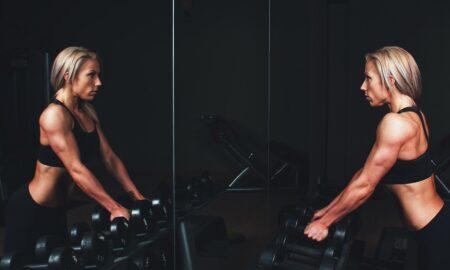Q: What’s the truth about the arm measurements claimed by bodybuilders?
A: Most arm measurements in the bodybuilding world are extremely exaggerated. If you look at some bodybuilding publications, 20-inch arms appear to be within the grasp of just about anybody who can afford certain supplements, and 22-inch arms are about a dime a dozen on the IFBB pro circuit. Take it from me, however; that is far from the truth.
One of the first to tell the truth about bodybuilding measurements was Nautilus inventor Arthur Jones. He published the real arm measurements of elite bodybuilders such as Casey Viator, Mike Mentzer, Sergio Oliva and Arnold Schwarzenegger.
In The Nautilus Book, Volume II, Jones recounts that the most muscular arm he ever measured was that of Sergio Oliva. At 20 1/8 inches, Sergio’s arms literally dwarfed his head, making him appear the target of some weird voodoo curse. Of course, that book was published in the early ’70s. Since then, the average bodybuilder has “evolved” considerably, mostly thanks to improvements in nutrition, training methodologies and—how shall I put it?—“recuperative” methods.
In general, improvements in arm measurement are related to gains in lean body mass. A good rule of thumb is that for every inch you want to gain on your arms, you need to gain roughly 15 pounds of quality, well-distributed mass. In other words, to make significant improvements in your arms, you have to gain mass all over your entire body.
The human body is a finely tuned machine that will allow for only a certain amount of asymmetry. Therefore, if you devoted your training solely to building big arms, you’d eventually reach a point of total stagnation because you weren’t training your legs—no wheels, no wings. Furthermore, if arms grew without some sort of concurrent development in the legs, most bodybuilders would have to walk on their hands.
There are some interesting correlations when you compare bodybuilders’ heights, weights and arm measurements. For instance, a 5’7” bodybuilder who weighs 214 pounds and has 8 percent bodyfat should have arms between 19 1/4 and 19 5/8 inches. Yet many of those individuals claim to have arms that are more than 21 inches, a measurement that’s quite rare, regardless of height and bodyweight.
Q: What genetic factors determine how large my arms will grow?
A: Generally, three genetic factors ultimately determine arm-growth potential:
1) Number of muscle cells. A Canadian study of elite bodybuilders revealed that those with the greatest number of cells are the ones who normally achieve the largest cross-sections of muscle.
2) Length of muscle belly. The lower a muscle inserts—the closer to the elbow joint for arm muscle—the greater its potential for hypertrophy. Just look at Larry Scott’s biceps compared to Franco Columbu’s. Larry’s have a very low insertion point, which gave him great potential for arm growth. Columbu’s insertion was relatively high, but his lats inserted very low—and that, of course, was his most famous bodypart.
3) Hormone makeup. This is obviously the easiest one to circumvent, which is why steroids are so popular among the genetically challenged.
Regardless of your particular genetic limitations—if you have any—don’t resign yourself to the idea and accept that you’ll never have big arms. Anyone with the proper knowledge can expect to gain a significant amount of overall muscle—and that, of course, will translate into arm mass.
Q: I was told by a colleague of yours that you have your staff count down the repetitions for every set. Why is that?
A: The proper mind-set is critical. Arnold Schwarzenegger said many moons ago that you should always ask yourself why you’re doing a set. Answering the question will give you the right mind-set. The number of reps performed for a given time under tension is largely what dictates the training effect. If you know what you’re looking for, you’ll decide on the proper number of reps.
Begin every set with a definite rep goal—let’s say five. As you begin your set, count the repetitions down: five, four, three, two, one. Why? It keeps your mind focused on the task at hand, not on the outcome. When trainees count upward, they tend to focus on whether they’ll complete the set.
Editor’s note: Charles Poliquin is recognized as one of the world’s most successful strength coaches, having coached Olympic medalists in 12 different sports, including the U.S. women’s track-and-field team for the 2000 Olympics. He’s spent years researching European journals (he’s fluent in English, French and German) and speaking with other coaches and scientists in his quest to optimize training methods. For more on his books, seminars and methods, visit www.CharlesPoliquin.net. IM




















You must be logged in to post a comment Login